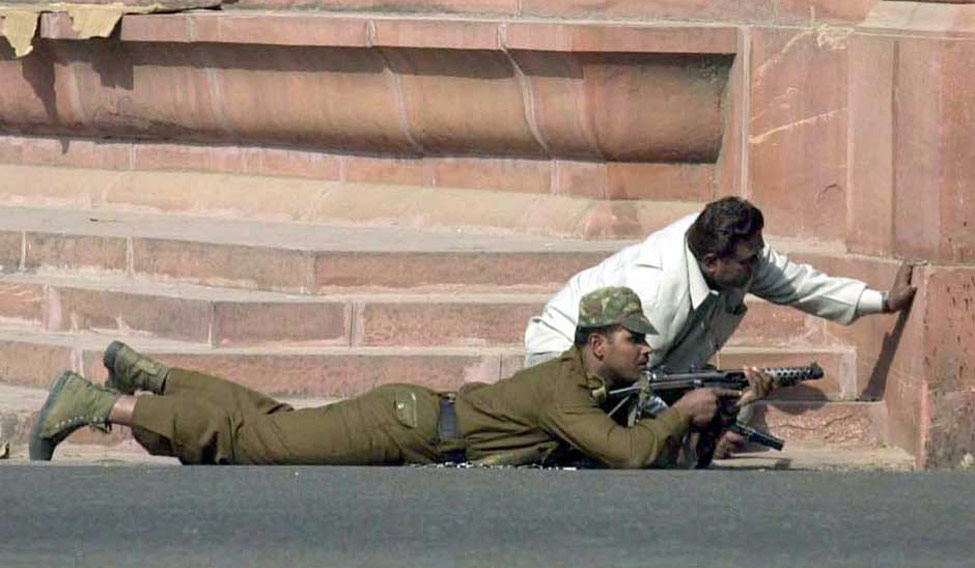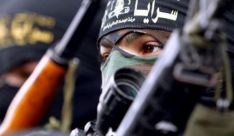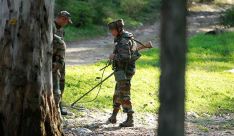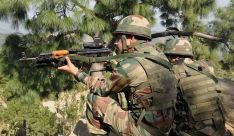The terrorists who launched the audacious terror attack on the Parliament on December 13, 2001 entered Kashmir from across the border. They did not come in a large group but preferred to come one by one. Though this happened over a period of two months we could not detect it. Perhaps, it was impossible to detect.
But the fact is that we had no information or any intelligence about them or about the Parliament being under threat. The gang traveled to Delhi thereafter and entered the Parliament campus on that fateful day in a second hand white Ambassador with a blue beacon mounted on top. They even had a fake Parliament security pass which the security personnel failed to detect. The Parliament security personnel check the passes of people entering the Parliament building. After the personnel checked their passes, the car entered the complex. But the terrorists did not realise that the gate ahead was locked. Perhaps they did not have this information and became nervous when they realised the mistake. They decided to reverse the car and enter the main complex from another gate. The office of the vice president was close by and the motorcade was standing outside. The terrorists reversed the car at high speed and hit one of the government vehicles standing there.
The security men from the vice president’s motorcade immediately stepped out to see who was in the car. They realised that the men in the car were wearing camouflage uniform. When one of the security personnel went up to the driver, the terrorists realised that their game would be up at anytime. The man sitting behind the driver had an AK-47 and shot the security personnel.
Within seconds, the Delhi police, which was also present there, shot at the terrroists and exchange of fire began. The Delhi police personnel were carrying small range pistols as they don’t move around with heavy arms. But the terrorists were carrying lethal weapons like AK-47s and grenades. They threw the grenades and fired the AK-47s at the security personnel. The CRPF cordon was about 100yards away from the spot. A joint action by the CRPF and the security personnel brought all the five terrorists down. But the exchange of fire resulted in the death of 14 persons, largely consisting of security personnel.
l was in office when I got the information. It was an unimaginable that the Parliament could be attacked by terrorists. I and the DCP in-charge reached the Parliament after instructing the officers to bring more forces. But by then the firing had stopped. The mobiles, weapons and a lot of other evidence was lying on the grounds. We formed a special team to collect the evidence. I asked the special cell to carry out the investigation. The Parliament was evacuated immediately and combing operations were carried out to ensure no other terrorist was in hiding behind the trees or bushes. The MPs were organised to go home and for those who didn’t have cars, buses were called.
It was found during the investigation that the mobiles which were recovered from the terrorists had incoming calls from Pakistan. It is on the basis of concrete evidence that Afzal Guru and others were identified as the conspirators and perpetrators of the attack.
Two main aspects came out of this investigation. First, that a very notorious terrorist gang from Pakistan had had a hand in it. They were the same terrorists involved in the Kandhahar hijacking. We came to know through investigation that there were others who were co-conspirators. All of them were picked up. It was a record that this case was worked out in 2-3 days by the excellent effort of the Delhi police special cell.
The biggest achievement of the investigation was that Pakistan's involvement in terrorist activity was exposed before the international community. It was for the first time that an investigation had nailed Pakistan’s involvement in harbouring terrorists. Since then the international community has recognised Pakistan as a safe haven for terrorists.
Along with all this, some lessons were learnt by us too. The main one being that we need to improve our intelligence gathering mechanism. We should have actionable intelligence and not vague intelligence. Vague intelligence only warns us, but actionable intelligence tells you to start action against the enemy. Though it exists, there is a need to improve it further.
Ajay Raj Sharma was Delhi police commissioner when the attack happened.
As told to Namrata Biji Ahuja










